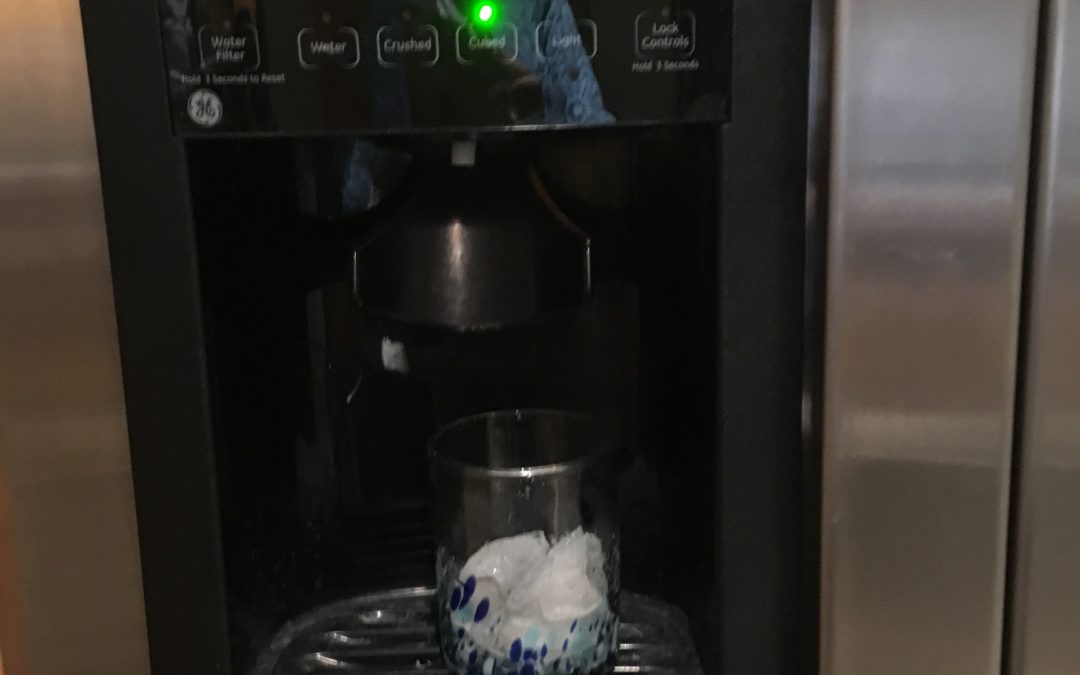The other day, I stuck a glass up to the ice dispenser in the door of our freezer. I could hear it grinding away, but nothing was happening.
A Glacier in the Freezer
But, I knew that a lack of ice wasn’t the issue. The little bucket thingy in the freezer will sometimes gum up from too much ice. If the dispenser isn’t used much and if the ice doesn’t move around, then is starts to clump together and eventually there’s just a glacier of ice in the bucket and it can’t get down the dispenser.
The solution is to open the freezer, pull out the bucket, and pull out the baby glaciers. I usually dump them in the sink. After I do that, and put the bucket back in with the remaining cubes (well, more these half-moon shaped things than cubes), then the ice comes down the dispenser just fine.
Why Isn’t Anything Happening?
But when I was tossing out the latest ice clumps, I thought about how often our lives can get like this. It seems like nothing is happening, but the fact is that our lives and our brains are just too full. Everything’s kind of jammed up and nothing’s getting achieved. Or, in the workplace, we feel this way either about ourselves or even about our team. Why isn’t anything happening?
We need to mentally declump and toss some things into the sink to melt and go down the drain. Unfortunately, it’s not always quite as easy as it is with the ice chunks. But here are a few thoughts about how to do it, because after all, what is a blog post without some steps.
Steps
- Don’t ignore what’s going on or think it will get better somehow. It’s not. Intervention is necessary. The ice is not going to break up on its own.
- Take a moment for a quick gut check. Is this the same problem as before?
- Open the metaphorical freezer and have a peek to see if the problem really is too much ice this time.
- Think about the steps you need to take and break them down into smaller tasks that seem like something you can tackle. Consider what you need to stop doing as well.
- For example, I need to stop holding a glass under the dispenser – nothing is going to come out. Then I need to open the freezer door, push the bottom of the ice bucket to lift it up slightly, and then slide it out.
- Don’t make the process harder than it needs to be.
- Sometimes sliding the ice bucket all the way out is a real pain. And then getting it back into place can be worse. But I rarely need to do those things to get rid of the extra ice. I can usually pull it out just a few inches, just enough to make a little space for my dainty hand.
- At the same time, don’t stop in the middle. You could create more problems or make things worse.
- With my freezer example, if I pull out a few clumps of ice, but don’t push the ice bucket back in, I’m going to have a whole new set of problems. If the bucket is still partially out, the freezer door won’t close on its own as it normally would – it’ll be open an inch or two. My ice cream might melt, which would be a catastrophe for this ice cream addict. The freezer is going to try working overtime to keep everything cold. Those funky ice crystals will probably develop on everything. And the ice maker will probably keep making ice, but will just be dropping it into the freezer itself since the bucket is not in place properly.
- Once you get the immediate problem in better shape, take a moment to reflect. Is there a way to keep this from happening again?
- For me, I don’t have this problem in the summer since I’m using the ice a lot more then. In winter time, I could be more proactive and periodically check how the ice is building up and remove it before the grinding noise begins.
A Lesson in Leadership
As Freud would say, sometimes a cigar is just a cigar. Sometimes an ice clog is just a clog. And sometimes, it’s a lesson in leadership.
How Can I Help?
Technical experts can become exceptional leaders – but many of them need and want a roadmap. The path forward isn’t as clear as it was for their technical specialty. If you or your organization needs help with your reluctant leaders, please get in touch.



